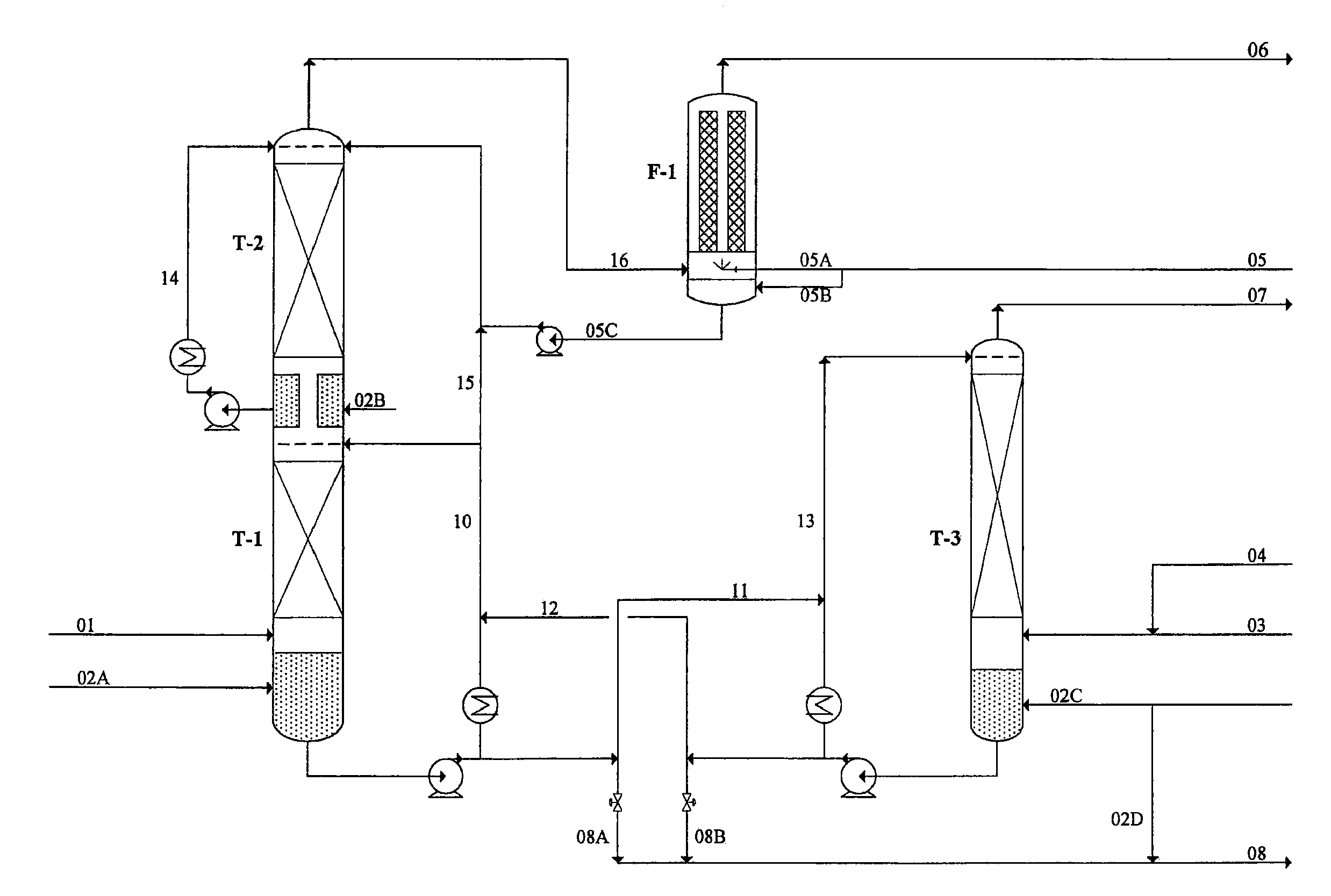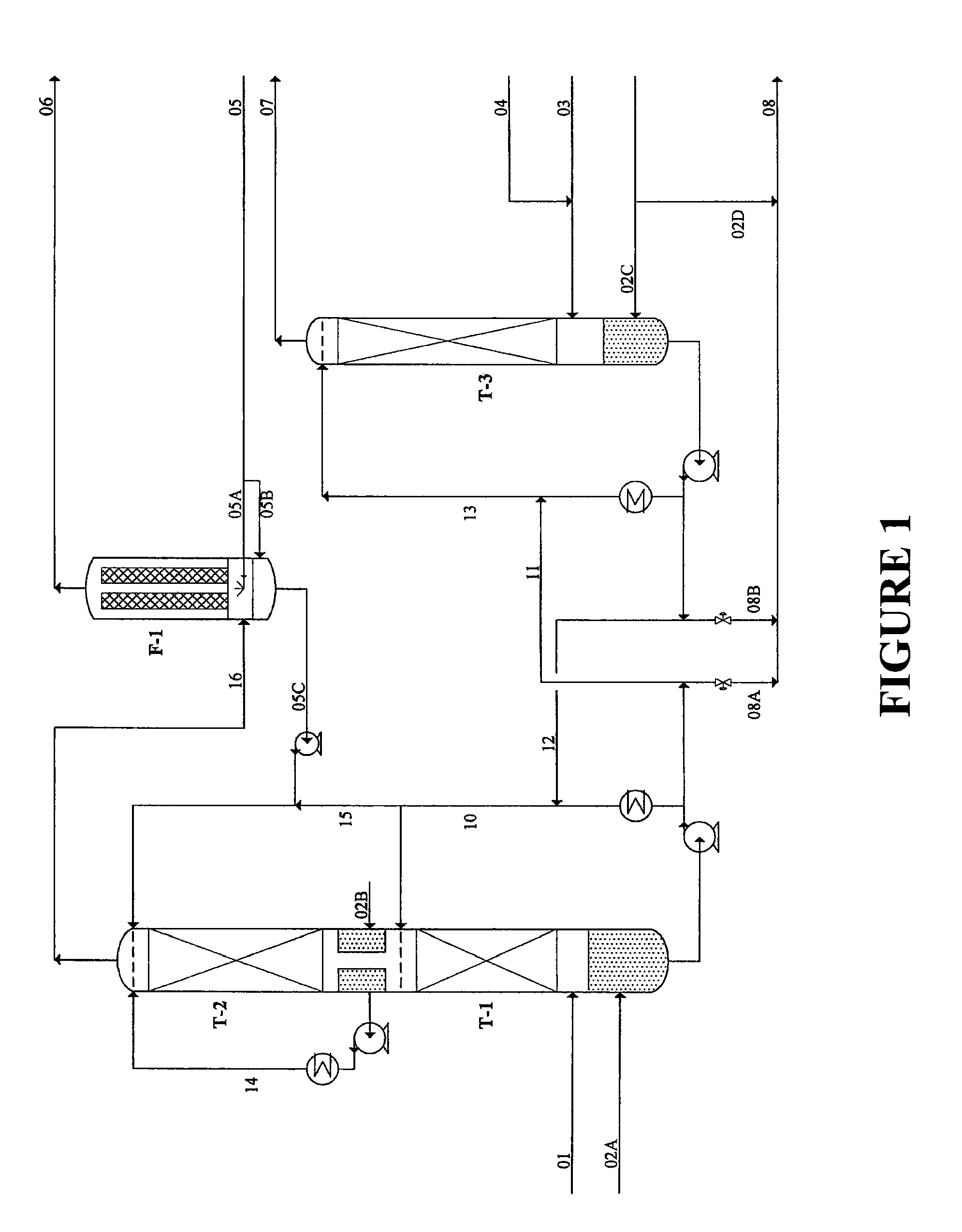ATS tail gas treating process for SRU and SWS off gases
a tail gas treatment and gas technology, applied in the direction of gas-gas reaction process, separation process, alkali metal sulfite preparation, etc., can solve the problems of significant addition to the overall cost of the overall sulfur recovery operation, reducing the total sulfur recovery capacity of the main claus sru, and adding to the sulfur load. , to achieve the effect of high efficiency, high absorption efficiency and high efficiency
- Summary
- Abstract
- Description
- Claims
- Application Information
AI Technical Summary
Benefits of technology
Problems solved by technology
Method used
Image
Examples
Embodiment Construction
[0016]This invention relates to an ATS tail gas treating process for recovery of Claus SRU Incineration Gas, Acid Gas and SWS off gasses containing SO2, H2S, NH3, O2, N2, and H2O for the purpose of sulfur recovery, ammonia recovery, sulfur emissions control and ATS production. The process provides for continuous production of ammonium thiosulfate, (NH4)2S2O3, (“ATS”), as a concentrated (60%) aqueous solution for use in agricultural and other markets.
[0017]The process uses two primary gas / liquid contactor / absorbers for contacting, absorbing and reacting sulfur dioxide gas with ATS solution in the SO2 Contactor / Absorber and hydrogen sulfide and ammonia gas in a separate H2S Contactor / Absorber. ATS solution is the primary absorber solution and is continuously re-circulated through the SO2 Contactor / Absorber for SO2 absorption and continuously re-circulated through the H2S Contactor / Absorber for H2S and NH3 absorption. The separate recirculation loops have their own heat exchanger coole...
PUM
| Property | Measurement | Unit |
|---|---|---|
| temperature | aaaaa | aaaaa |
| temperature | aaaaa | aaaaa |
| temperature | aaaaa | aaaaa |
Abstract
Description
Claims
Application Information
 Login to View More
Login to View More - R&D
- Intellectual Property
- Life Sciences
- Materials
- Tech Scout
- Unparalleled Data Quality
- Higher Quality Content
- 60% Fewer Hallucinations
Browse by: Latest US Patents, China's latest patents, Technical Efficacy Thesaurus, Application Domain, Technology Topic, Popular Technical Reports.
© 2025 PatSnap. All rights reserved.Legal|Privacy policy|Modern Slavery Act Transparency Statement|Sitemap|About US| Contact US: help@patsnap.com


